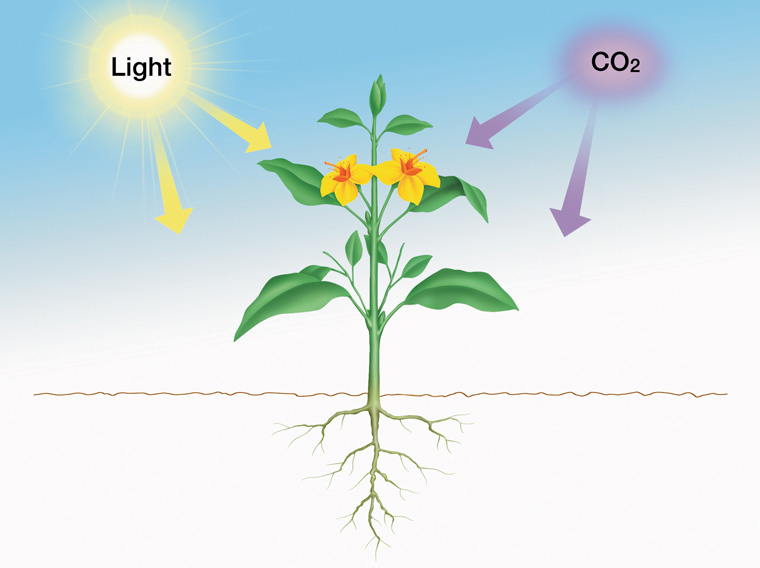
 |
|
Hydroponics - Indoor HorticultureHydroponics - Indoor Horticulture represents an educational, in-depth,
up-to-date,
indoor horticultural growers guide that covers all principles of indoor Hydroponics - Indoor Horticulture examines, explores, dissects and
presents a fully comprehensive step by step growers guide, relating
to all and every aspect of indoor hydroponic horticulture, with complete
chapters on plant biology, propagation, hydroponic systems, nutrients,
oxygen, carbon dioxide enrichment, pH, biological pest control, fungi/disease,
cuttings/clones, pruning/training, breeding, harvesting, equipment,
grow rooms, a full history of hydroponics, and more. |
| (Below follows a one page
sample taken from the book) Chapter 7 Carbon Dioxide |
||
It is not widely known that the dry matter in a plant is 90% carbon, hydrogen and oxygen. The majority content which is carbon, is taken into the plant through carbon dioxide available from the air. The average air that we inhale contains 0.003- 0.004 % of carbon dioxide. Carbon dioxide is an odourless, non-flammable, colourless gas. It is believed that the prehistoric plants that developed aeons ago had environmental conditions with very high levels of carbon dioxide in it. In today’s plants, due to their evolution, these more modern incarnations have maintained their capacity to harness more CO2 than the current environment now has. Science has shown that high energy plants have the ability to consume PPM levels of 1200-1500 and in some cases even as high as 1750 parts per million; the average air we breath contains 300 parts per million. So, as you can see, high energy plants in the right conditions can consume much more than nature is currently providing. The consumption levels of CO2 that the plants’ needs is directly correlated to lumens that they are subjected to i.e. the greater the intensity of light, the greater levels of CO2 that the plants can consume, the greater the plants become. Again it is not widely known that a plant saturated in light will only grow to be as big as the CO2 levels in that particular environment. |
In other words, you might have all the light a plant could ever want, however, if the plant is only receiving a little CO2 then most of the light available to the plant is simply going to waste and is not available for consumption via the plant, as it cannot utilise the CO2 to photosynthesise the light. An average high energy plant in an average lit grow room with no in or output fans will consume the available CO2 within that grow room in a few hours. So any growth after all the CO2 has been utilised will slow completely down to a snail’s pace. This uptake of CO2 is only necessary during the lighting cycle; plants do not require CO2 during the night cycle when the lights are off. Plants, like humans, do breathe out CO2, however, during their daylight cycle, the plants utilise the CO2, manufacturing sugars to feed the plants and so during the day cycle appear to only breathe out oxygen. Science has shown that the more light a high energy plant is subjected to, the more CO2 the plant requires for photosynthesis. During this photosynthesis, it takes approximately 10 photons to generate enough electrons to create sufficient energy to split one carbon dioxide molecule into carbon and oxygen atoms to form sugar. Typically, trillions of these photons are hitting a plant’s leaves, which means if the grower is not providing enough CO2, then most photons will simply bounce off the leaves without being consumed. |
|
 |
| 75% and more of the plants' food is provided above ground |
|
 |